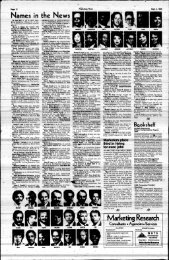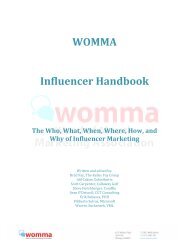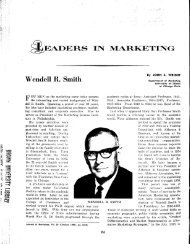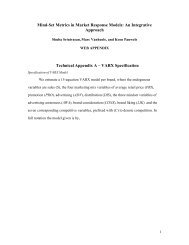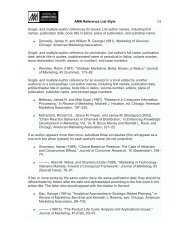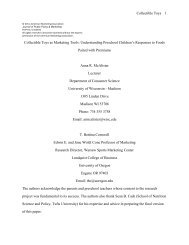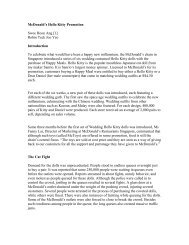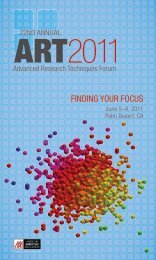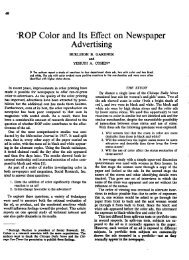Automated Marketing Research Using Online Customer Reviews
Automated Marketing Research Using Online Customer Reviews
Automated Marketing Research Using Online Customer Reviews
Create successful ePaper yourself
Turn your PDF publications into a flip-book with our unique Google optimized e-Paper software.
Conceptually, we model this process as a constrained optimization problem. Abusing our<br />
previous notation slightly, assume a set of phrases I composed from the set of words J and a set of<br />
attribute dimensions D. We have J � D binary decision variables Xjd where Xjd is 1 if word j is<br />
assigned to dimension d. There are I � J {0, 1} variables representing a constraint matrix where Yij is<br />
1 or 0 depending upon whether word j appears in phrase i. Thus, our objective is to:<br />
max<br />
s.<br />
t.<br />
� X<br />
�<br />
�i Y * X � 1<br />
X<br />
jd<br />
jd<br />
J<br />
ij<br />
binary<br />
The graph partitioning algorithm used to set the parameters I, J, and D and the constrained logic<br />
program (CLP) by which we solve the optimization are implemented in Python and detailed next.<br />
[5] Graph representations<br />
To discover attributes, we assume that each customer review phrase corresponds to a distinct<br />
product attribute. To discover attribute dimensions, we assume that each word in the phrase corresponds<br />
to a distinct dimension. Discovering attribute dimensions then reduces to the assignment of particular<br />
words to attribute dimensions. But how do we know how many dimensions there are in the assignment<br />
problem? Is it possible that the assignment optimization has no feasible solution because of conflicting<br />
constraints due to noise from the vagaries of human language? To solve this problem, we generate a<br />
graph of all words in the cluster. Each word is a node and arcs are defined by the co-occurrence of two<br />
words in the same phrase. We partition the graph into (possibly overlapping) sub-graphs by searching for<br />
maximal cliques. Intuitively, each sub-graph represents a maximal subset of words and phrases for which<br />
an optimal solution exists. The size of the maximal clique sets the number of attributes |D|. The sub-<br />
graph (words J and phrases I) define the optimization.<br />
jd<br />
5



